How to design a coffee station – in 5 easy steps from kitchen experts
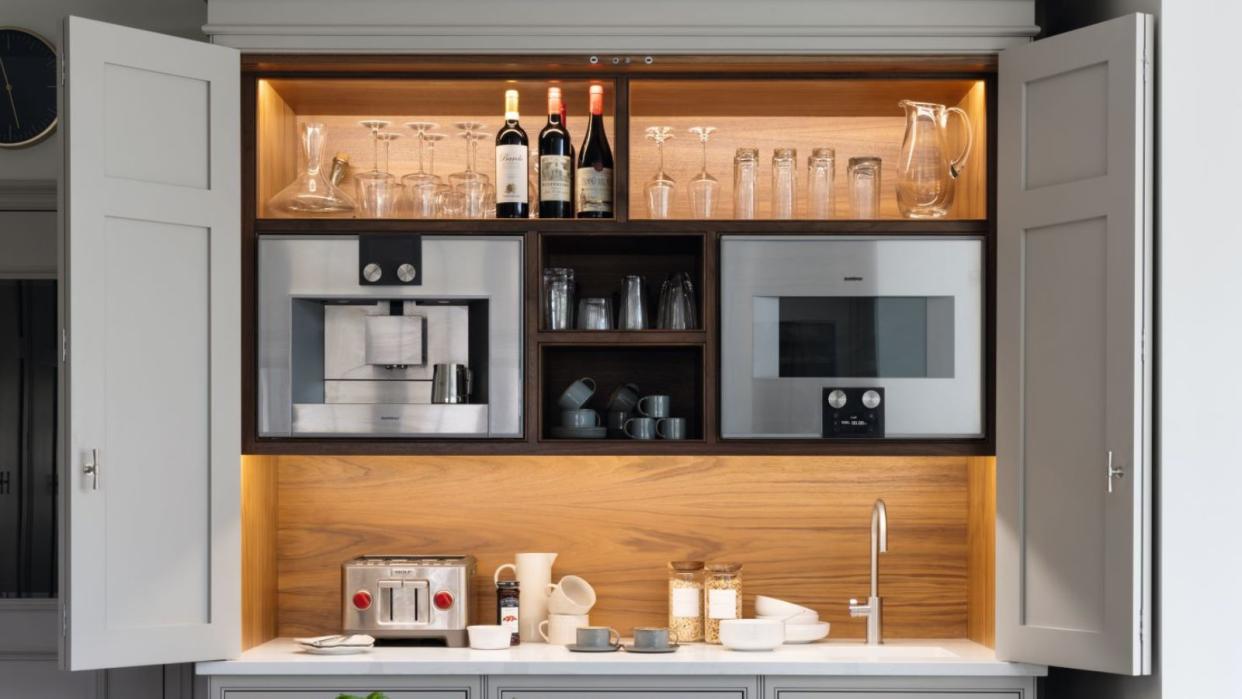
There's no denying that mornings – sometimes lunchtimes and evenings – revolve around that perfect cup of coffee.
But where once we made do with showing off our best coffee maker on the kitchen counter, now coffee stations are the focal point of the most fashionable spaces.
We spoke to kitchen and coffee experts to discover how to design a faultless coffee station for your home.
How to design a coffee station
Coffee stations can, of course, double up as breakfast stations with the addition of a toaster and storage space for cereal and bread. This will help to keep the rest of your kitchen free from mess, especially if you have family members who whirlwind through the house in the mornings without tidying up after themselves. And, of course, a coffee station needn't be in the main kitchen; if you have the space, siting it out of the way in a walk-in pantry or back kitchen can be a practical choice.
1. Start with the coffee
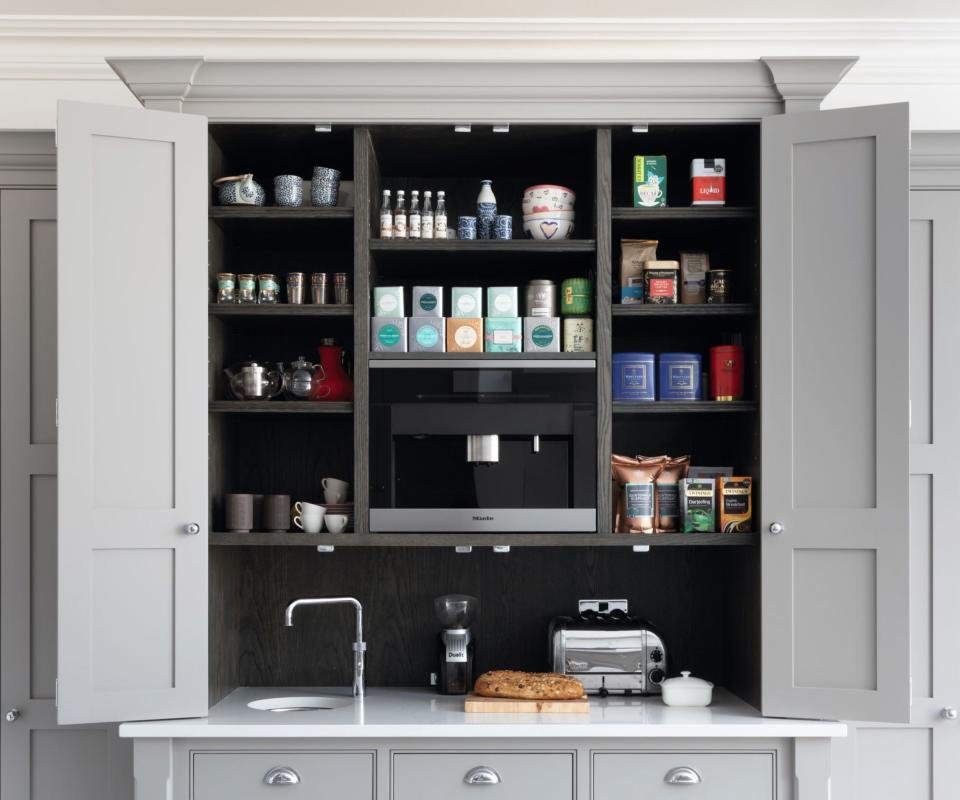
There is so much more to coffee than the cup. Justin Kowbel, co-founder of Borough Kitchen says that ‘coffee is a total pleasure, from the ritual of the process to the flavor and, of course, the shot of caffeine that makes the day a little easier’.
There are lots of different types of coffee makers on the market, each suited to a very different kind of coffee drinker. Laura Honey, our trained barista and e-commerce editor, says, ‘I love my espresso machine (it’s the Breville Bambino Plus which you can buy from QVC). This style of coffee maker the same one that baristas use, so if you want to emulate that café experience, it’s the perfect investment’. If you want a more simple, affordable option, Laura recommends using simple filter paper and cone pour-over coffee makers, French presses, or moka pots.
Coffee making doesn’t have to be complicated, but there are a few things you should know before you get brewing. Justin says ‘whatever equipment you use, your beans need to be freshly roasted and ground (on the appropriate setting for your coffee kit)’.
Laura says 'when I'm using my espresso machine, I make sure to grind my coffee freshly, but also into a really fine powder. This means that the machine can make a sweet, rich shot of coffee. If you’re going to use a French press, you’ll want to use the coarsest setting on your coffee grinder to make a well-rounded, slightly acidic coffee'. It's also important to make sure that your water isn't too hot for your coffee grounds. If it's boiling, your coffee will burn and taste bitter. Aim to have your water at 194-203℉ and your coffee will be perfect.
As well as having the best coffee maker for your palette, it's vital to have the following kit:
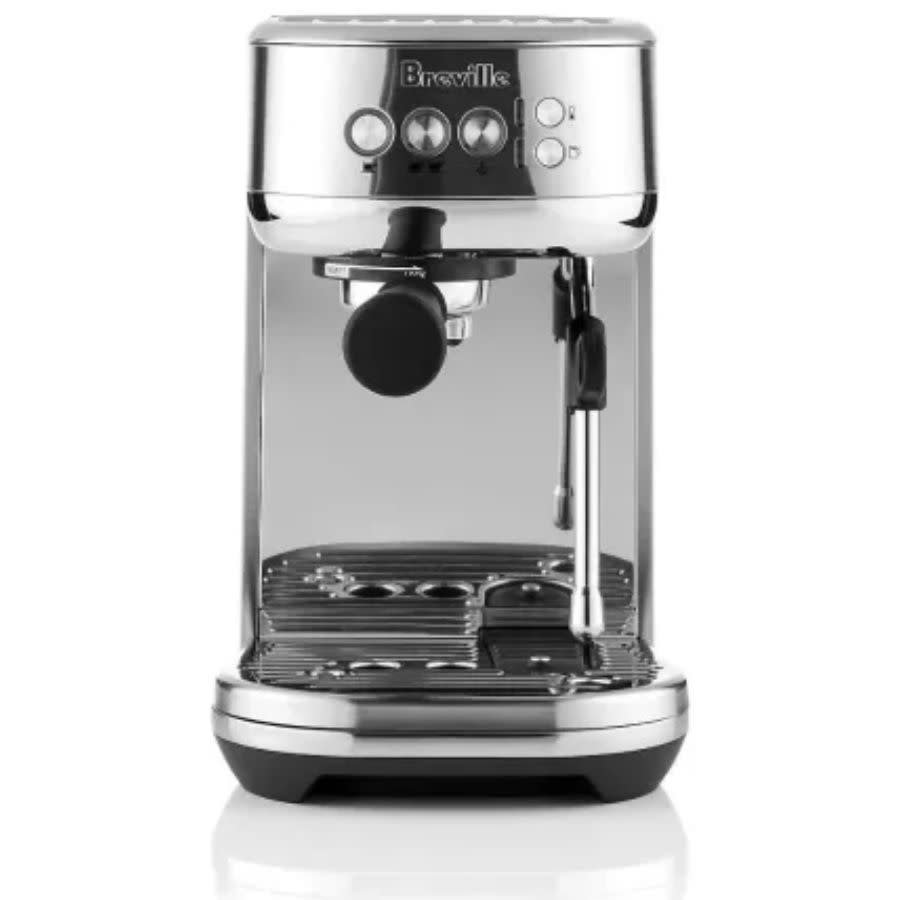
Espresso machine
Breville Bambino Plus
This is Laura's favorite espresso machine. It can pull an excellent espresso shot, rich and full of flavor. The 'Plus' model has a milk frother, perfect for cappuccinos and lattes.
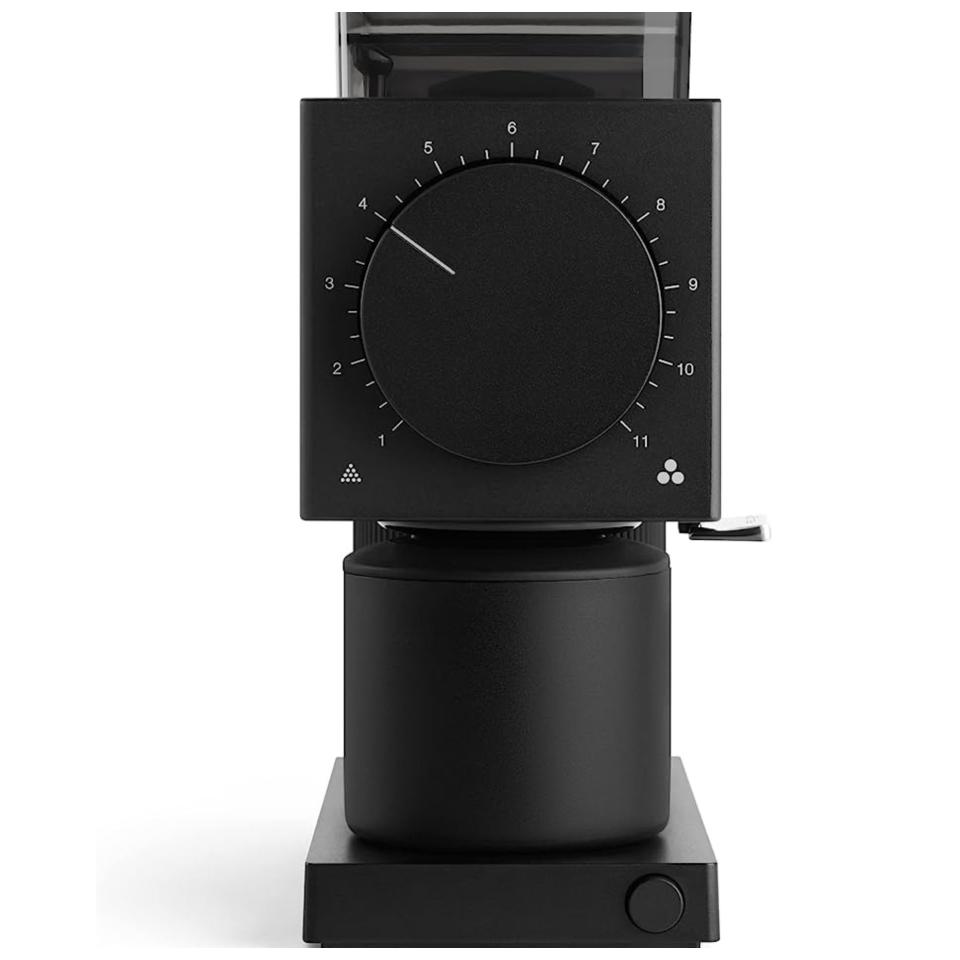
Coffee Grinder
Fellow Ode
Laura recommends this coffee grinder. It's the one that she uses in her home coffee station. The flat burrs make consistent grounds and don't damage the essential oils in the coffee.
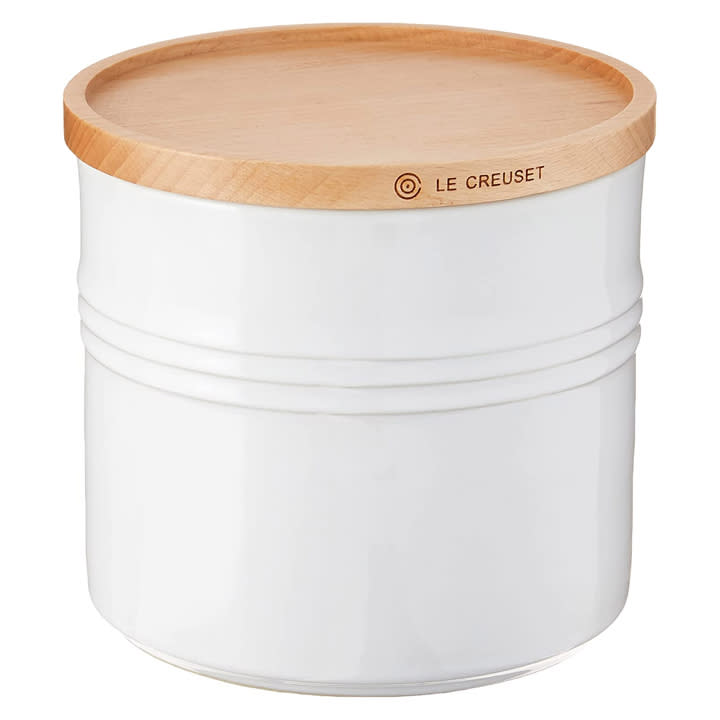
Le Creuset Canister
Perfect for keeping your coffee grounds fresh, this canister is as stylish as it is airtight. I'd recommend buying a few so that you can store your sweetener and cookies in them too.
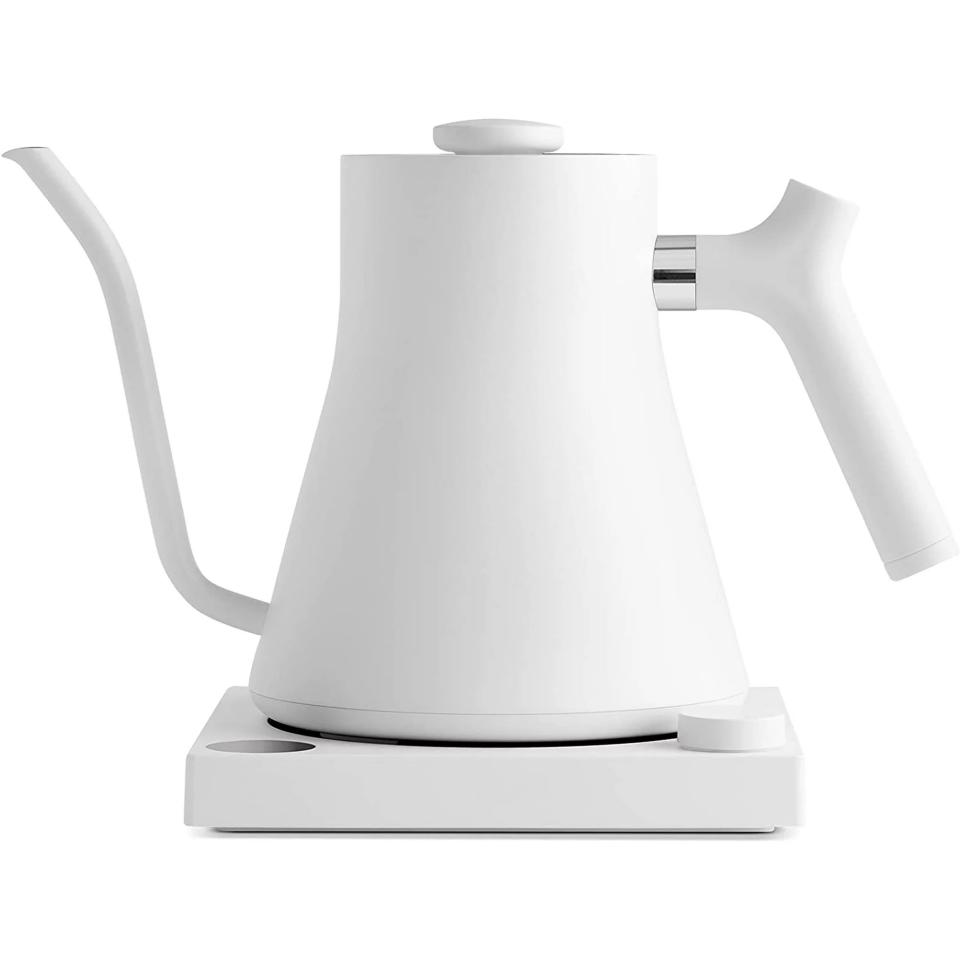
Electric kettle
Fellow Stagg Gooseneck
If you want a precise temperature, this electric kettle is a must-have. It's perfect for pour-over and looks sleek on the countertop too.
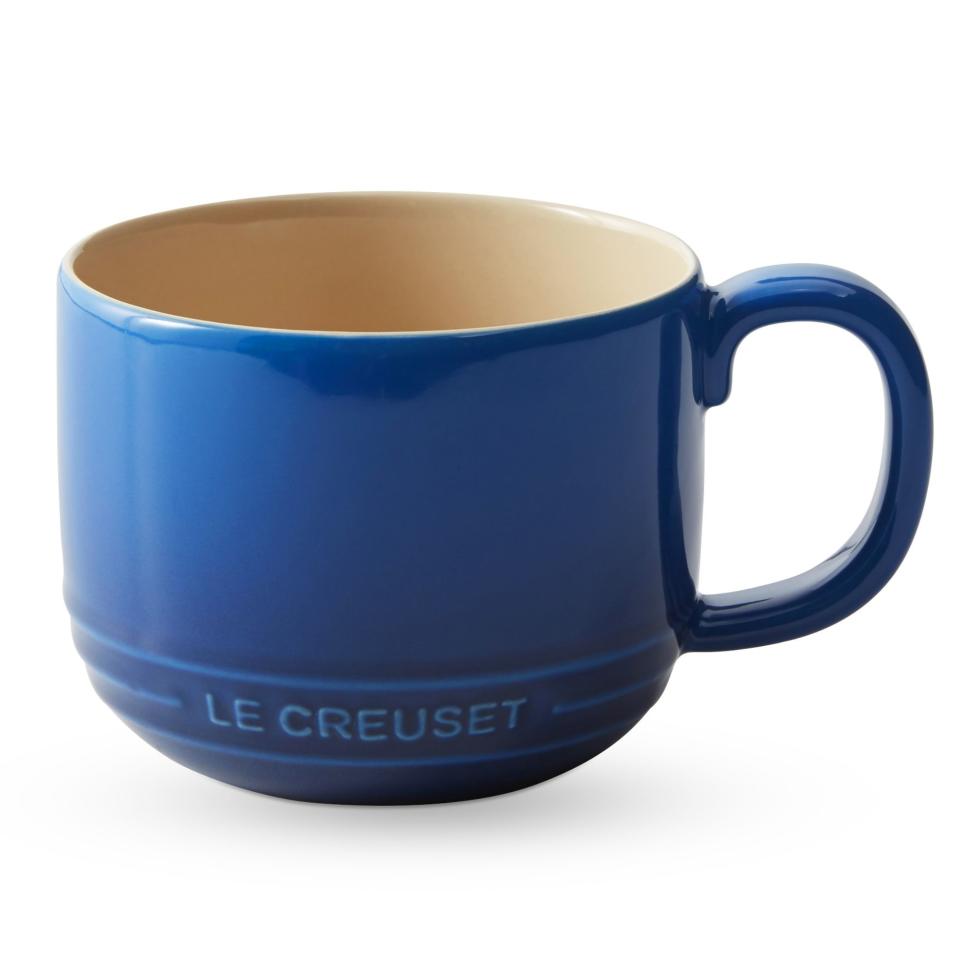
Le Creuset
Hot coffee tastes better in a quality mug. Le Creuset make durable, stylish cups, which are available in a range of colors. You can buy them the same or in a range of hues.
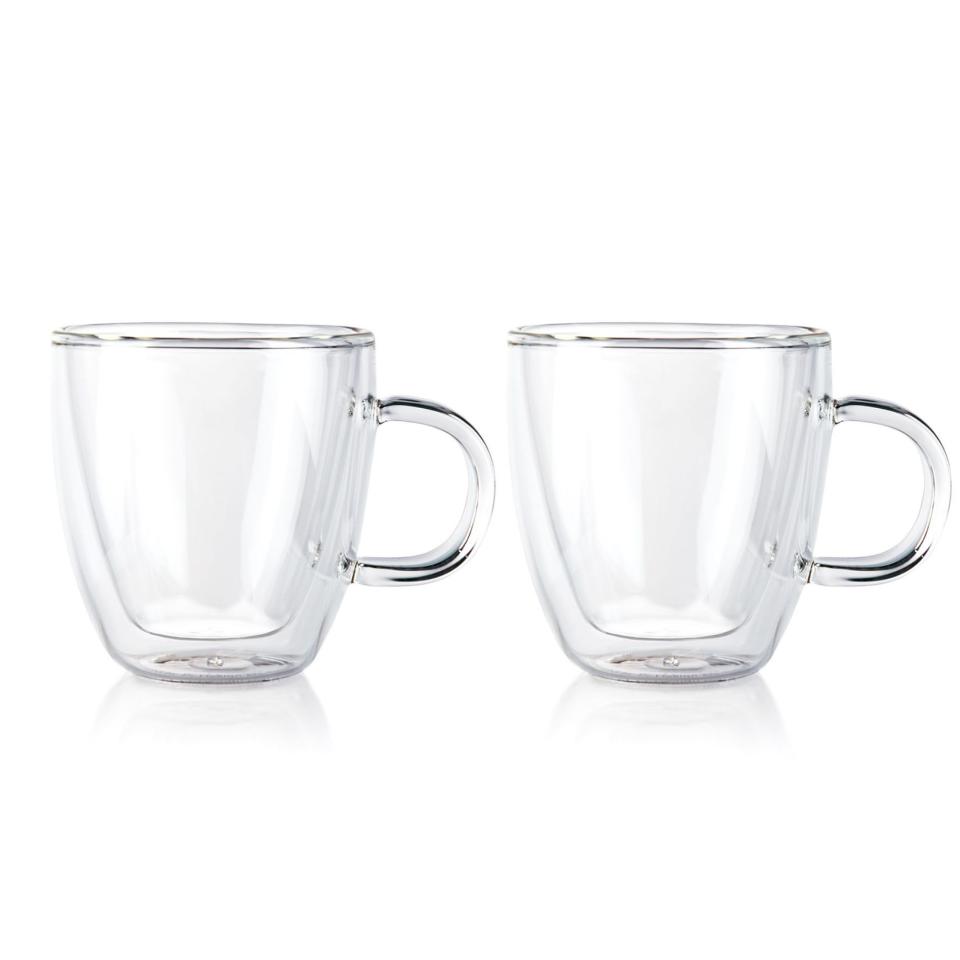
Bodum Bistro Double Walled
Whether you're making iced coffee, or you simply like watching milk marble through your brew, these double walled coffee mugs deliver the visuals.
The best coffee grinder. Laura recommends using the Fellow Ode grinder, which you can buy from Amazon. She says 'it uses flat burrs, so makes consistent grounds without heating or damaging the delicious oils in your coffee'.
Storage canisters or boxes (for storing anything from coffee beans to your choice of sweetener). We like these Veken airtight containers at Amazon.
Coffee cups for hot coffee.
Glasses for iced coffee.
2. Built-in vs freestanding coffee makers
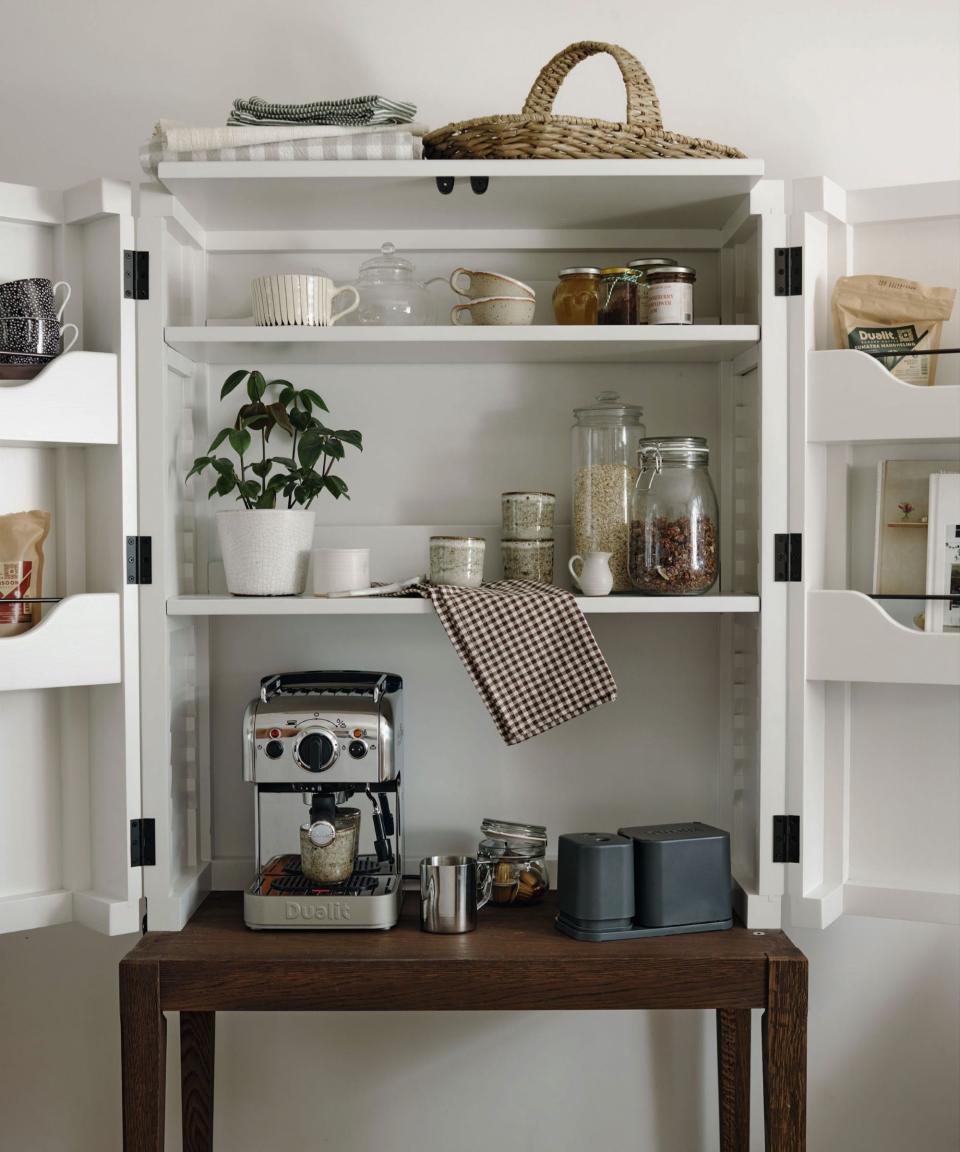
‘Freestanding coffee makers are smaller and so have smaller water and bean containers than built-in machines,’ explains Sophie Lane, product training manager, Miele.
‘For example, our smallest freestanding coffee machines have 1.3ltr water containers versus 2.7ltr in the built-in models, so naturally the built-in appliances can make more drinks without refills.’
Some built-in models have a plumbed-in water connection, some have automatic cleaning and descaling functions and most will offer more drink selections in the menu than freestanding designs.
‘A countertop coffee machine offers flexibility as it can be moved around the kitchen with ease or if you move house and requires no costly installation, just a spare plug socket,’ says Dualit's Debbie McIvor-Main. ‘It is also a more affordable option compared to a built-in model, but can still offer the same level of quality.’
3. Consider ergonomics

‘For a streamlined look, a coffee maker built-in at eye level as part of a bank of appliances in your kitchen cabinetry may be the best choice,’ explains Neil Norton, managing director of Neil Norton Design.
The height of most built-in coffee machines is around 18in.
‘With a warming drawer below, they are designed to “match” the 24in height of a built-in single oven, to create a symmetrical look,’ he explains.
4. Keep it all together
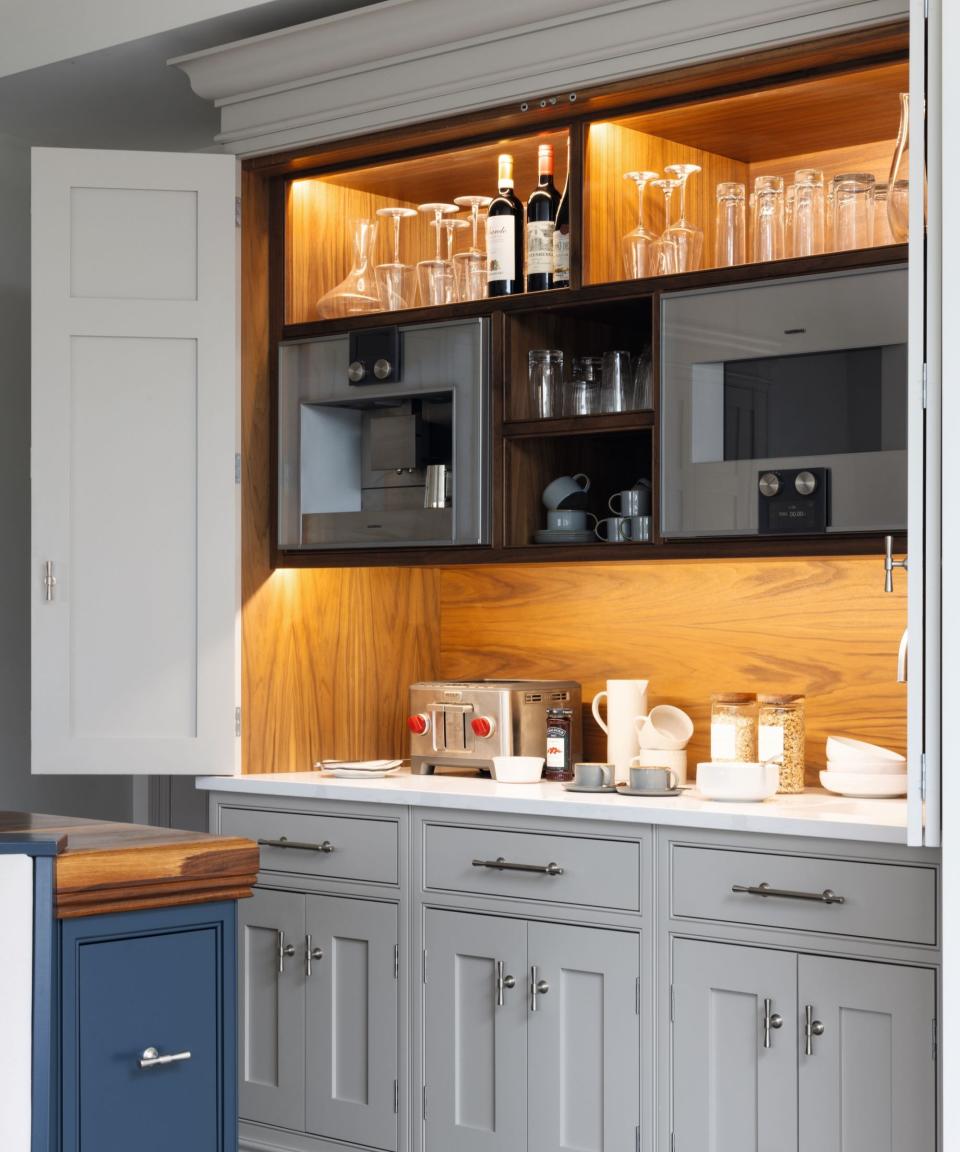
It makes sense to design a place in your kitchen with everything you need for your coffee routine in one place.
‘The best place is hidden in a kitchen dresser or cupboard, so that once the coffee is prepared, you can close the doors, concealing all the clutter until it’s time to tidy up,’ explains Tom Howley, design director at Tom Howley. ‘We recommend at least a 35in-wide cupboard for a freestanding coffee maker with a small preparation area adjacent, while, for built-in coffee makers, the main consideration is the depth of the unit – they need a 24in depth.'
5. Consider aesthetics
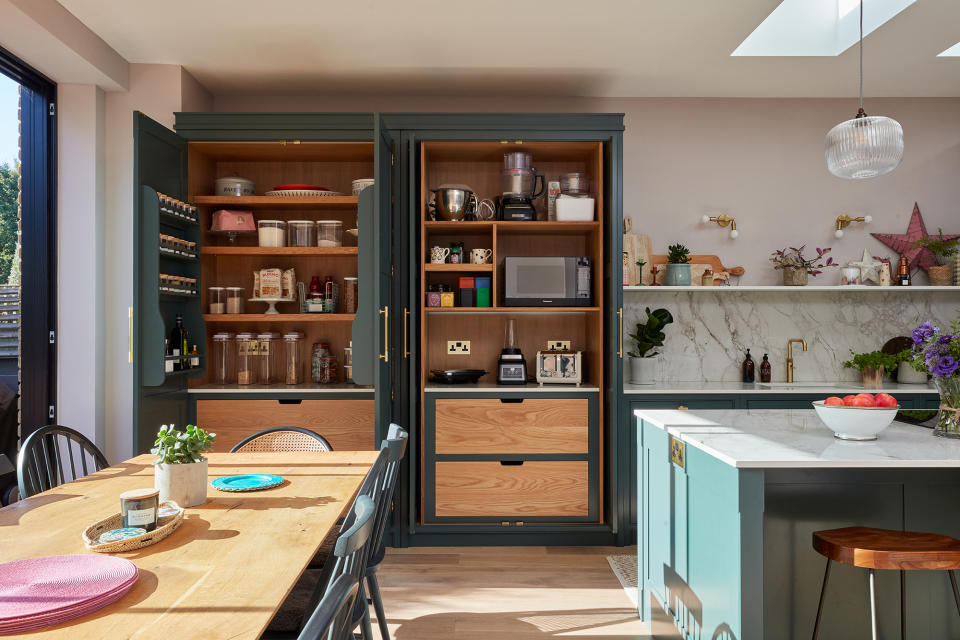
'A coffee station might be hidden away behind doors that match the rest of your kitchen cabinet ideas, but often the doors, which might be sliding or concertina, may often be open, revealing the interior. This is your chance to have fun with finishes,' says Lucy Searle, Editor in Chief, Homes & Gardens.
'Choosing a different, perhaps more luxurious interior material will bring layering and depth to your kitchen, allow you to introduce natural textures or perhaps a different kitchen color.
'You might also want to choose different fittings, such as handles, and you should take time to consider how to light your coffee station, especially if it houses glassware, but certainly to make what can be a dark interior space practical.'
FAQs
How do you make a perfect coffee station?
The perfect coffee station should include some open shelving behind the doors to make reaching cups and coffee easy; then you need coffee canisters (we like these Veken airtight containers at Amazon) to keep your beans or grind fresh. A cutlery drawer and storage for everything from milk frothers to cookies are indispensable, too.

